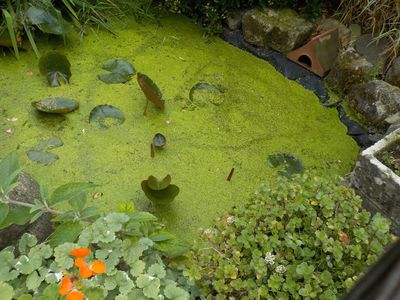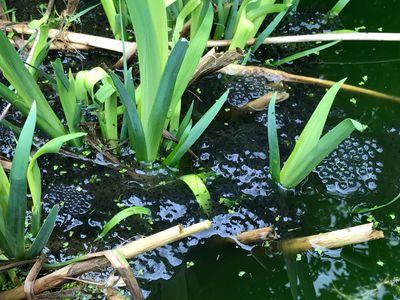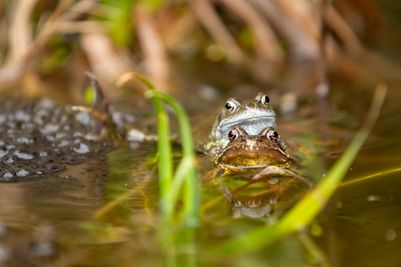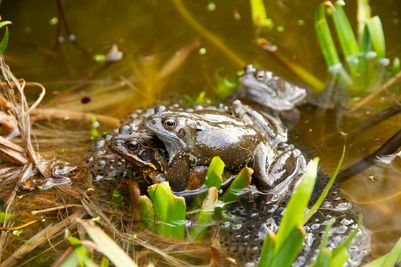Hoppy Habitats – transform your garden into a frog and toad paradise
Published:
Read Time: 4 mins
Creating a haven for frogs and toads in your garden is not just a treat for these often misunderstood little critters. While many might squeal with an ‘eek’ or ‘yucky’ at their sight, frogs and toads are delightful garden helpers. They are indicator species and natural pest controllers, and their croaks and ribbits add a delightful soundtrack to any garden! And let’s not forget the newts, a flash of orange and yellow on their bellies announces their vibrant presence as they glide gracefully through the water. Sean McMenemy, passionate nature expert and founder of Ark Wildlife, shares his advice on how you can make your outdoor space a welcoming home for these beneficial creatures.
Craft your own pond
“A pond is the ultimate amphibian magnet. Frogs and toads are drawn to water as they get virtually all of their water and part of their oxygen through their skin, making a garden pond essential for their survival! Choose a sunny spot with some shade to keep the water comfortable and provide a cool retreat for our amphibious friends. Remember, your pond doesn’t need to be huge – even a small one can make a big difference. Aim for a depth of at least 60cm in one area, as this will prevent it from freezing in winter. Use natural materials like stones, pebbles, and logs to create gentle slopes, ensuring easy exits for young frogs, newts and toads.
Add nature’s touch
“To protect these little hoppers from predators, plant foliage around the pond’s edge for cover. A delightful mix of marginals, oxygenators and emergent plants will create the perfect froggy paradise! When planting a pond, it's important to include different classes of plants. Oxygenators, like Canadian pondweed for small ponds or Hornwort and Water Soldiers for larger ones, keep the water fresh by bubbling oxygen into it. Emergent plants, such as Arrowhead and Flowering Rush, use up detritus, preventing algae growth while adding beauty. Marginals like Brooklime and Yellow Flag Iris provide cover, food, and habitat, blending the pond into the garden beautifully.
And don’t forget their need for a cosy shelter away from the water – consider adding a delightful toad abode or frog house! These quirky hideaways provide the perfect retreat for your garden’s hoppy residents.”
Embrace the wild
“A tidy garden might be pleasing to the eye, but it doesn’t offer much to wildlife! Letting a part of your garden grow wild provides a safe haven for frogs, toads, and other beneficial creatures. Let the grass grow longer in one area, allow leaves and branches to build up in a corner, and plant native wildflowers and grasses. Wild areas mimic the natural habitats of amphibians, offering them protection from predators and harsh weather. Plus, these areas attract insects and other invertebrates, providing a ready food source.”
Create a compost corner
“Compost is like a gourmet buffet for our amphibian friends! It lures in a delightful array of tasty insects that frogs, toads and newts simply adore. From juicy slugs to wriggly worms, these critters not only make a scrumptious meal but also work their magic to create nutrient-rich compost for your garden.
“Compost piles offer a cosy sanctuary where amphibians can find refuge, especially when they crave a cool, damp hideaway. To make them feel at home, place your compost heap in a shaded position for a consistent internal temperature. And remember, if you happen upon any frogs, toads, or newts nearby, be sure to tread lightly - disturbances might deter them from returning to your patch!”
Ditch the pesticides
“Amphibians are like nature’s own pest control squad, gobbling up pesky slugs, flies and snails with gusto. Frogs are particularly great friends of the gardener, scoffing hundreds of bugs and caterpillars every day. By consuming low lying pests, they help keep plants bug-free from the bottom, tackling critters that birds can't reach. Encouraging these croaky creatures into your garden not only helps keep bugs at bay without chemicals, but they also help to maintain a healthy ecosystem.
“Frogs and toads are equipped with thin, breathable skin that allows them to take in oxygen and release carbon dioxide. However, this same permeable skin also makes them vulnerable to harmful substances like pesticides, posing risks to their health, so make sure to restrict your use to not only protect amphibians, but also the wider environment.”
“To attract these croaky companions to your patch, simply create an inviting habitat using the steps mentioned above. With a little effort, you can make your garden a haven where amphibians feel welcomed and right at home!”
For more expert advice from Sean, and to browse Ark Wildlife’s range of solutions for wildlife, visit www.arkwildlife.co.uk
Ends
Editors notes
Ark Wildlife is a UK-based company specialising in wildlife-friendly products and solutions. They are known for providing a wide range of products designed to support and encourage wildlife in gardens and outdoor spaces, while inspiring its customers to make one small, simple step to help nature thrive.
Ark Wildlife offers a wide array of bird feeders, bird foods, and bird care accessories to attract and nourish birds such as robins, blue tits, sparrows, and other garden birds. They also provide habitats for hedgehogs, bats, and insects, aiming to create a balanced and biodiverse ecosystem in domestic environments.
The business was founded by wildlife enthusiast Sean McMenemy, an expert with an unparalleled understanding of garden wildlife which dates back to a passion developed during his childhood. He is regarded as a leading authority on garden wildlife and has personally driven more innovation, quality and convenience to the bird food and wildlife market than anyone else.







